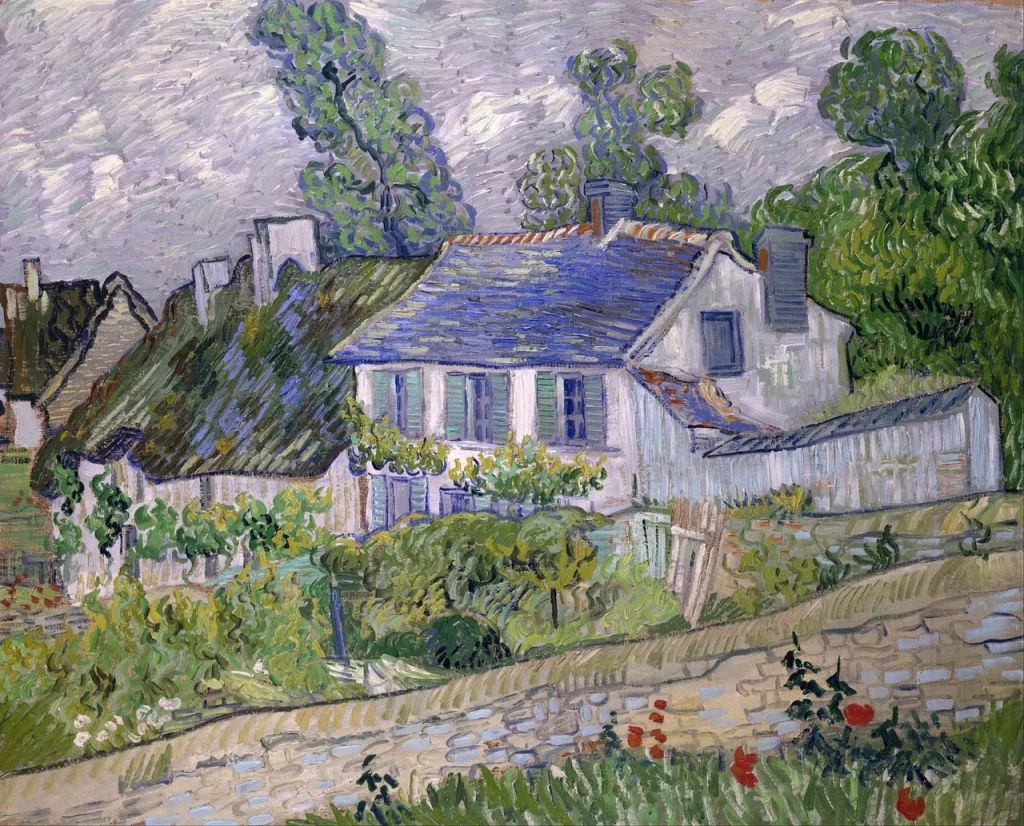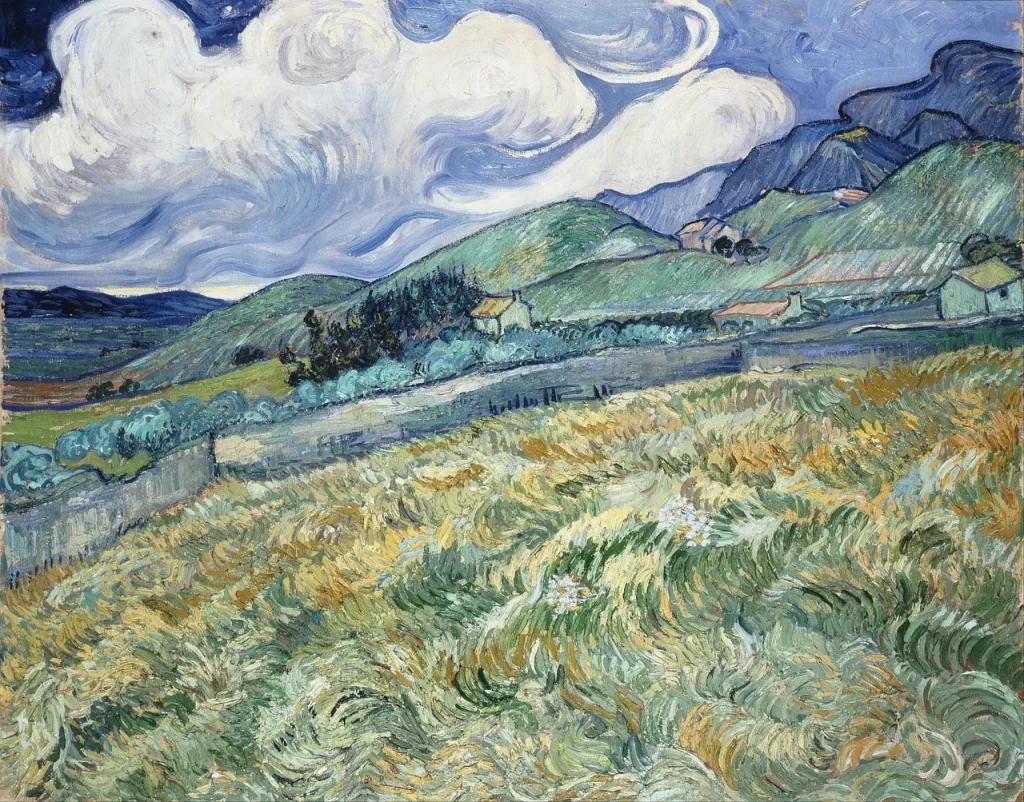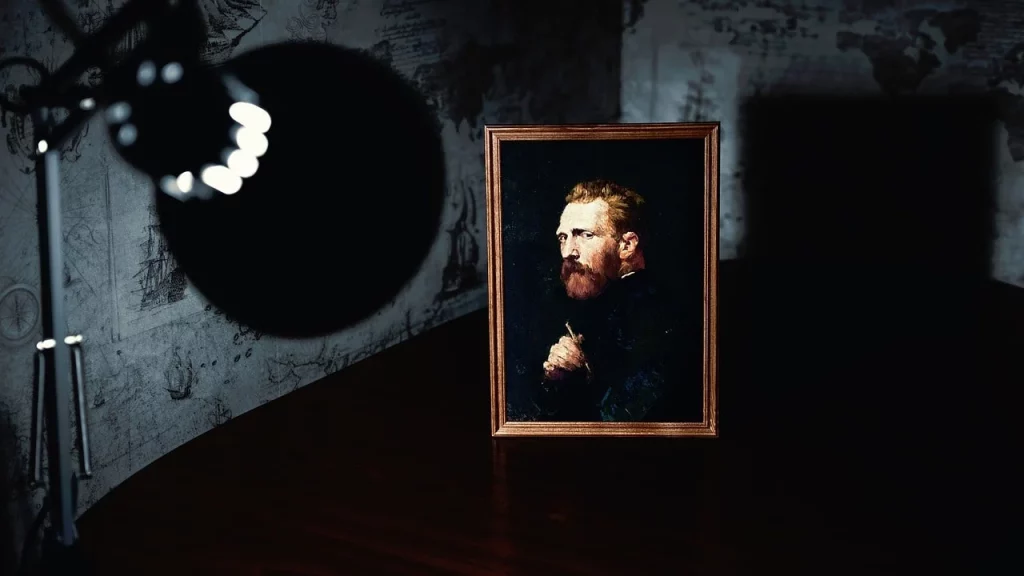Have you ever stood before a swirling, starry night sky and felt a sense of wonder? Vincent van Gogh, one of the most celebrated artists in history, captured that very feeling in his timeless paintings. In this journey through some epic Vincent van Gogh facts, we’ll explore the world of this remarkable painter.
From his vibrant sunflowers to his turbulent life story, each fact will bring us closer to understanding the man behind the brushstrokes. So, grab your palette and let’s dive into his colorful world.
The way to know life is to love many things.
Vincent van Gogh
Vincent van Gogh Facts
Before you embark on the intricate life and works of Vincent van Gogh, be aware that I created a quiz at the article’s end to challenge your attention to detail. Read each fact carefully to prove your mastery of van Gogh’s legacy.
- Vincent van Gogh was born on March 30, 1853, in Zundert, Netherlands.
- He had a brother named Theo, who was four years younger and with whom Vincent maintained a deeply affectionate and lifelong correspondence.
- Before becoming a painter, Van Gogh pursued careers as an art dealer, teacher, and preacher.
- Van Gogh’s first major work was “The Potato Eaters” (1885), depicting the harsh life of peasants.
- He moved to Paris in 1886, where he encountered Impressionism and Neo-Impressionism, significantly influencing his style.
- Van Gogh suffered from psychiatric illness, which affected his work and life.
- In a famous incident, he cut off part of his left ear during a bout of mental illness.
- “Starry Night”, one of his most famous works, was painted in an asylum in Saint-Rémy-de-Provence, France.
- Van Gogh used a technique known as “impasto”, applying paint thickly to create texture.
- He was heavily influenced by Japanese art, as seen in his bright color palette and bold brushwork.
- He sold only one painting during his lifetime, “The Red Vineyard”.
- His work “Irises” was one of the most expensive paintings ever sold at auction.
- Van Gogh’s “Sunflowers” series is among his most famous and includes several different paintings.

- He often used color to express emotion, a technique characteristic of his style.
- Auvers-sur-Oise, France, is where Van Gogh spent his final months and produced many of his works.
- Van Gogh’s relationship with fellow artist Paul Gauguin was complex and ended tumultuously.
- He was largely unrecognized and struggled with poverty throughout his life.
- Post-Impressionism is the art movement van Gogh is most commonly associated with.
- His painting “Bedroom in Arles” depicts his living quarters, showcasing his use of color and perspective.
- Van Gogh’s extensive letter correspondence provides insight into his thoughts and creative process.
- He created approximately 2,100 artworks, including around 860 oil paintings, in just over a decade.
- Van Gogh’s “The Yellow House” depicts the house he rented in Arles and hoped to establish as an artists’ retreat.
- He suffered from a condition called xanthopsia, which may have influenced his frequent use of yellow.
- Van Gogh’s “Almond Blossoms” was created to celebrate the birth of his nephew and namesake, Vincent Willem.
- “Wheatfield with Crows”, often mistaken as his last painting, is famous for its dramatic, expressive style.
- His work became widely celebrated after his death, influencing generations of artists.
- He only began painting at the age of 27, which is relatively late for an artist.
- “Café Terrace at Night” is one of Van Gogh’s most popular works and is renowned for its innovative use of color and perspective.

- He was inspired by the landscapes and people of the various regions he lived in, from the Netherlands to Southern France.
- His painting “The Night Café” is known for its haunting, emotional depiction of a cafe interior.
- Van Gogh’s work on “The Roulin Family” series exemplifies his interest in depicting ordinary people.
- He struggled with loneliness and often expressed these feelings in his letters and paintings.
- Van Gogh’s “Self-Portrait with Bandaged Ear” is a poignant reflection of his mental state after the ear incident.
- “Orchard in Blossom” reflects Van Gogh’s fascination with nature and renewal.
- Despite his struggles, Van Gogh remained prolific throughout his life, creating a vast body of work.
- His painting “Vincent’s Chair” symbolizes his solitary life, featuring his empty chair in his room.
- Van Gogh’s “Sunflowers” paintings vary in number and positioning of the flowers, each with a unique perspective.
- “The Sower” is a recurring theme in Van Gogh’s work, symbolizing cycles of life and nature.

- His fascination with the night sky is evident in several of his paintings, including “Starry Night Over the Rhône”.
- “The Langlois Bridge” reflects his interest in capturing the essence of rural life.
- His work has inspired numerous films, books, and songs, contributing to his posthumous fame.
- He was influenced by earlier artists such as Rembrandt and Millet.
- “The Church at Auvers” showcases his unique approach to depicting architectural structures.
- “Fishing Boats on the Beach at Saintes-Maries” is an example of his fascination with marine life.
- Van Gogh’s bold brushstrokes and vivid colors are considered precursors to modern expressionism.
- He often experienced financial difficulties, relying on his brother Theo for support.
- “The Olive Trees” series reflects his interest in capturing the essence of the Mediterranean landscape.
- “The Reaper” is another example of Van Gogh’s focus on rural life and the working class.
- His influence on art is considered to be immense, particularly in terms of color theory and emotive expression.
- Despite his mental health struggles, Van Gogh’s commitment to art remained unwavering until his death.
Vincent van Gogh Myths

I hope you enjoyed all these interesting facts about van Gogh. Let’s move on to the next section to uncover the truth behind some common myths.
- Van Gogh Sold Only One Painting in His Lifetime
While it’s true that van Gogh wasn’t commercially successful, he actually sold a few paintings and numerous sketches. His brother Theo, an art dealer, helped him financially and also facilitated some sales. - He Cut Off His Entire Ear
Van Gogh did harm himself, but he only cut off a portion of his ear, not the whole thing. This act was likely a result of his mental health struggles, which included severe depression. - Van Gogh Was Always Alone and Unloved
Despite his later years of isolation and mental illness, he was loved and supported by his family, especially his brother Theo. He also had friendships with fellow artists, like Paul Gauguin. - He Was Unrecognized and Unappreciated During His Lifetime
While he wasn’t as famous as he is today, van Gogh was not entirely unrecognized. He had connections in the art world through Theo, and some respected contemporaries admired his work. - His Art Was the Product of Madness
His mental health issues did influence his art, but they didn’t define it. His innovative techniques and use of color were a result of his artistic skill and vision, not just his mental state.
No products found.
Vincent Van Gogh Quotes

Vincent van Gogh, a name synonymous with the impassioned fervor of post-impressionist art, remains an enigma wrapped in a canvas of vibrant colors and tumultuous emotions. Here are my favorite quotes about him.
Van Gogh was not a lunatic. He was a genius.
David Hockney
David Hockney, a renowned British artist, emphasized the misunderstood genius of van Gogh, challenging the common narrative of his madness.
There is nothing more truly artistic than to love people.
Vincent van Gogh
Vincent van Gogh, known for his emotional intensity, considered love for people to be the highest form of art.
Van Gogh is the finest painter of them all. Certainly the most popular, great painter of all time. The most beloved, his command of color most magnificent. He transformed the pain of his tormented life into ecstatic beauty.
Marc Chagall
Marc Chagall, a renowned Russian-French artist, praised van Gogh’s unparalleled color mastery and his ability to turn personal suffering into transcendent beauty.
I often think that the night is more alive and more richly colored than the day.
Vincent van Gogh
Vincent van Gogh, reflecting his fascination with the night sky as seen in paintings like “Starry Night,” mused about the vibrancy and depth of night over day.
Van Gogh bent over the ugliness of the world to uncover the beauty hiding behind it.
Simone de Beauvoir
Simone de Beauvoir, a prominent French existentialist philosopher, recognized van Gogh’s ability to find and express beauty in the world’s seemingly ugly aspects.
Vincent Van Gogh FAQ

As we transition from the inspiring words of Vincent van Gogh, we approach the final section before the quiz. Pay close attention to these FAQs because they are the last piece of information you will get. Don’t disappoint me.
- Who inspired Vincent van Gogh?
Van Gogh was deeply influenced by a variety of artists and movements. In his early career, he admired the work of the Dutch Realist painters, particularly their ability to depict ordinary life with emotional depth.
Later, he found inspiration in the vibrant colors and expressive techniques of the Impressionists and Post-Impressionists. Japanese woodblock prints also had a significant impact on his style, particularly in his use of color and composition. - Was Vincent van Gogh married?
No, he was never married. Despite a few romantic entanglements during his lifetime, including a tumultuous and unsuccessful courtship with his landlady’s daughter in London and a profound attachment to his cousin Kee Vos, Van Gogh remained single throughout his life. - How did Vincent van Gogh die?
Vincent van Gogh died from a gunshot wound under mysterious circumstances. On July 27, 1890, he suffered a gunshot wound to the abdomen, possibly self-inflicted. He died two days later, on July 29, at the age of 37. While it’s widely believed he committed suicide, some theories suggest the wound may have been accidental or inflicted by someone else. - Is Vincent van Gogh French?
No, he was not French; he was Dutch. Born on March 30, 1853, in Zundert, Netherlands, he spent much of his adult life in France, which is perhaps why many people mistakenly believe he was French. - How did Vincent van Gogh lose his ear?
The story of how he lost his ear is one of the most famous incidents in his life. In December 1888, during a bout of mental illness, van Gogh severed part of his left ear with a razor.
This event occurred after a heated argument with fellow artist Paul Gauguin in Arles, France. van Gogh then wrapped the ear in a piece of paper and gave it to a woman at a local brothel. This act marked the beginning of a series of severe mental health crises for him.
No products found.
Vincent van Gogh Trivia

Welcome to the Vincent van Gogh Quiz! If you don’t get at least one question right, you might find yourself missing an ear… for art.
Conclusion
Vincent van Gogh’s life and work encapsulate a poignant blend of brilliance and torment. His vivid brushstrokes painted not just canvases, but also a vivid picture of his internal struggles. Each piece, from the sunflowers’ bright yellows to the swirling night sky, reflects a part of his soul.
As we delve into his world, we find a man driven by passion and plagued by despair, a reminder of the fine line between genius and madness. His legacy is a testament to the enduring power of human emotion in art.
How do you see van Gogh’s struggles reflected in his art? Do his paintings evoke a deeper understanding of his personal journey for you? Let me know your opinion in the comments.
12 Sources Used For This Article30 Best Vincent Van Gogh Quotes With Image – Bookey
10 Interesting Facts about Vincent van Gogh – Sarah Ran Some Art
Biography Of Vincent Van Gogh Essay – Slideshare
Van Gogh Quotes – Medium
10 Facts About Vincent Van Gogh – History Hit
Death of an Artist: Did Vincent van Gogh Kill Himself? – Historic Mysteries
Vincent van Gogh – The Art Story
Vincent van Gogh Dutch Post-Impressionist Painter – Hoocher
Van Gogh’s life in Provence – France Just For You
Top 15 most famous paintings by Vincent van Gogh – Sarah Ran Some Art
The Vincent van Gogh Gallery – Vg Gallery


